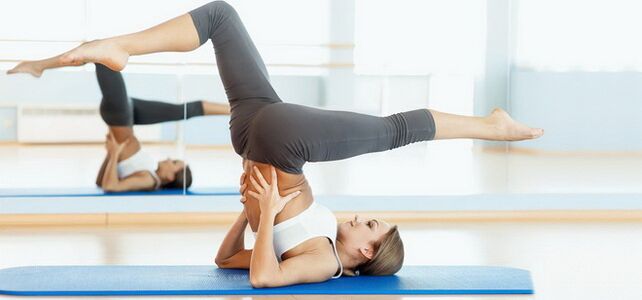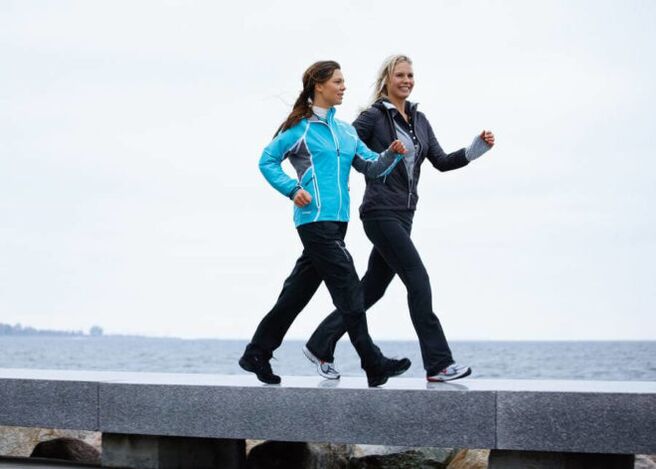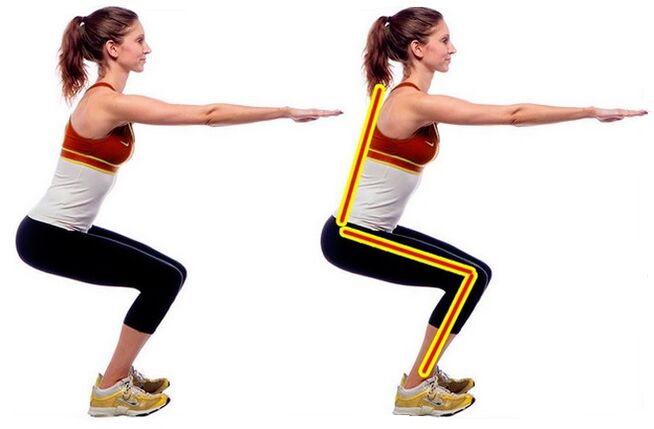Venous lesions affect people of all ages, including young adults. So the question naturally arises: Can varicose veins be exercised? How restrictive is the dangerous load on the calf muscles?
Is exercise bad for varicose veins?
The idea that people with venous disease cannot be physically active is wrong. Some subjects have beneficial effects on vascular status. Moderate exercise is suitable for different stages of the disease. Under the supervision of doctors, they even participate in complex forms of pathology.
The answer to the question whether it is possible to actively engage in sports with varicose veins can only be given by a phlebologist. After analyzing all the data on a person's physical condition, the specialist will explain which subjects to prioritize and which to avoid. Training helps:
- Normalizes lymphatic flow;
- Physical fitness;
- normalize blood circulation;
- Strengthens vein walls.

When choosing an exercise, they take into account that it can be difficult to tense or relax a certain muscle group while sick. Properly chosen discipline can normalize blood circulation. This leads to an improvement in the condition of blood vessels, reducing pathological manifestations.
Venous Disease Training Recommendations
To properly combine varicose veins and exercise, it is important to take expert advice into account. They will make work more productive and avoid complications.
Here are their recommendations:
- In the standing position, the legs bear the greatest load;
- The best option - courses "sitting" and "lying down";
- To train the heart muscle, give priority to rowing or recumbent exercise bike;
- In class, it is necessary to elastically wrap the legs;
- Upper body muscle groups are not limited by load;
- Drinking plenty of water is good for the blood.
No matter what exercise a person chooses, the load on the calf muscles should be moderate.
load selection
Despite the successful combination of fitness and varicose veins, it is necessary to choose the exercise load according to the individual characteristics of the body. The disease causes stagnation of blood, formation of nodules in blood vessels, and torsion of veins. Vigorous exercise can be harmful, leading to irreparable consequences.
water
Physical activity comes with sweating profusely. It is necessary to replenish the water lost in the body. Especially dangerous in venous pathology due to blood thickening. This can lead to poor circulation, stagnation and blood clots. Drinking plenty of water can replenish the water in the tissue cells and make the blood flow more. As a result, the heart muscle and valves are less stressed and the blood circulation in the blood vessels is accelerated.

suitable clothes
Exercises with varicose veins are best done with special clothing. A special type of ammo is sold, designed to keep the muscle in shape. They reduce the force in the legs, correctly distributing the pressure on the calf muscles.
Compression stockings (socks, stockings, leggings) are not only helpful for training, but also for everyday life. Regular use of overalls in combination with primary therapy can repair blood vessel walls and speed up recovery.
What to do when you are sick
Exercises that are good for varicose veins:
- Water aerobics and swimming.
- Cycling is good for strengthening the leg muscles because you have to work at a constant rhythm.
- Walking in comfortable shoes strengthens blood vessels.
- golf. During the competition, athletes are constantly active in the fresh air, which is of great benefit to their health.
Which exercises can be performed for venous pathology will be discussed further.
water sports
The recommended exercise for varicose veins is swimming. Classes in warm water reduce the load on blood vessels, tighten muscles and strengthen vein walls. Water is great for veins. Even in the difficult stages of varicose veins, classes in water are allowed.
yoga
Pilates yoga is allowed when sick. Such exercises are performed in static postures and are suitable for venous disorders. During class, observe correct movement and control breathing.

Therefore, it is not advisable to practice yoga alone. An experienced master monitors the correct setting to help relax and work the correct muscles.
allowed with restrictions
You can find out from your phlebologist what kind of exercise you can do within the constraints of varicose veins. Experts remind:
- run at an intensity approved by your doctor;
- Fitness is useful in the early stage of the disease;
- machines designed for supine training;
- Dance lessons (except for the bouncing element) are good for the legs.
running
Running at a moderate pace is pathologically useful. During class, the heart beats faster, the heart muscle is more active, and the blood circulates faster. The valves in the veins of the legs begin to work more intensively, decongesting them. For jogging, it is important to choose the right shoes - orthopedic insoles and comfortable trainers reduce the load on the calf muscles.

The duration and pace of the run is determined by the attending physician based on the patient's state of health.
walk
Walking is acceptable and suitable for varicose veins. Wear comfortable shoes for walking outdoors. It is best to put on a compression garment before walking. The pace should be moderate and can be alternated with sprinting. Walking in place is indicated in later stages of the disease.

Ineffective exercises and loads
Athletes who develop varicose veins during strength training, this type of athlete needs to increase the load on the legs while refusing to wear overalls.
About jumping and squatting
Be careful, you need to jump and crouch. In advanced stages of the disease, such exercises should not be performed. In the early stages, the action takes place at a slow pace, without amplifiers.

During the class, you should constantly monitor the condition of your veins. As soon as deterioration is detected, the course is stopped immediately. Patients should seek advice.
Squats can be practiced as long as they are shallow.
anaerobic load
Anaerobic activity involves physical exercise that results in a lack of oxygen. Strength training, using kettlebells and barbells, weightlifting and bodybuilding, cycling, and timed running are contraindicated activities for venous disease. In the absence of oxygen in the body, processes that help fill the lack of air are activated - the heart beats faster and pressure rises. This condition can be dangerous for problematic veins because it can lead to clots and bleeding.
Anaerobic load courses are permitted in the early stages of the disease in the following cases:
- use a compression garment or wrap the leg with an elastic bandage;
- reduce school hours;
- Drink plenty of water.
Sports equipment and varicose veins
After coordinating the load with a phlebologist, it is necessary to work on a varicose vein simulator. The main rule is a minimum load on the legs.
Strength training is appropriate in the initial stages of the disease, provided they are performed in a horizontal position. This reduces the load on the legs, and the load on the upper body muscles can be selected as needed.
A great alternative to jogging and biking is to work on a simulator. With varicose veins, you cannot run or cycle. Modern models regulate the load, control the pulse, monitor the pressure, the condition of the calf muscles. Back-supported exercise bikes place a lighter load on the leg muscles as the weight shifts to the back.
fitness and gymnastics
Less strenuous sessions with varicose veins are allowed, subject to the following rules:
- When training, wrap your legs with elastic bandages or wear tights;
- Avoid shock loads, strength exercises;
- perform the action correctly;
- Monitor vascular condition.
With the appearance of spider veins, the feeling of heaviness, you should immediately seek the advice of a phlebologist.
what to do after training
During exercise, blood flow accelerates and the calf muscles warm up. You should let them rest immediately after training. It is best to lie on your back with your legs above body level. This will help relax, send blood to the heart and restore breathing.

Exercise Contraindications
Professional sports are contraindicated for patients with varicose veins. This is especially true for people after surgery to remove veins or lymph nodes.
Do not allow your body to bear heavy loads, and avoid strenuous running and cycling. Contraindications to exercise - advanced forms of the disease: marked swelling of blood vessels, presence of nodes. Practicing independently can cause complications.
prevent varicose veins
Traditional medicine offers a variety of treatments for the disease. For example, St. John's wort and ginger root strengthen the immune system and help normalize blood circulation.
Prevention of varicose veins can be called quitting smoking and drinking. Wearing high heels for a long time, abusing hot baths and saunas all have bad effects on blood vessels.

















